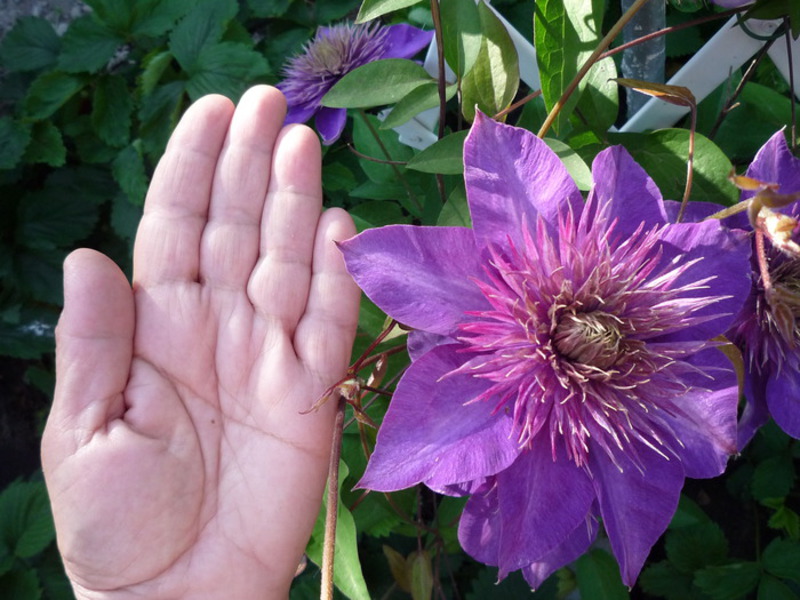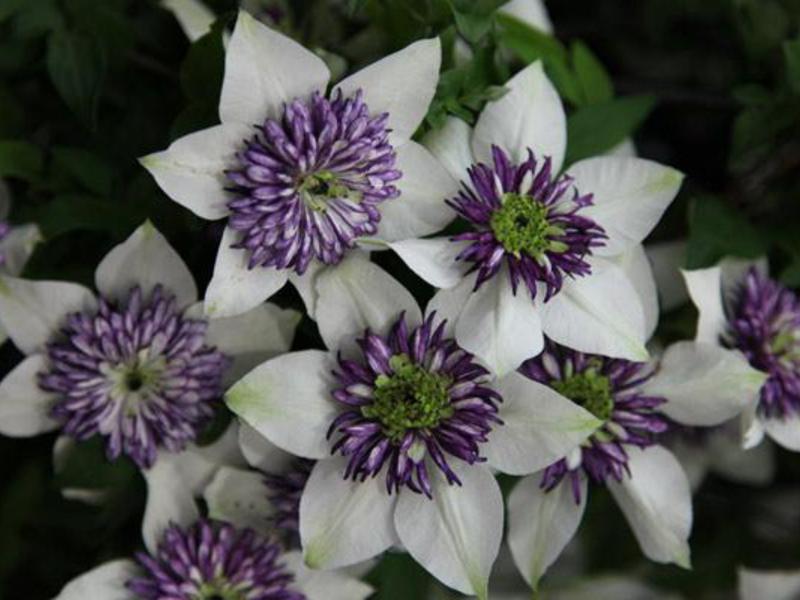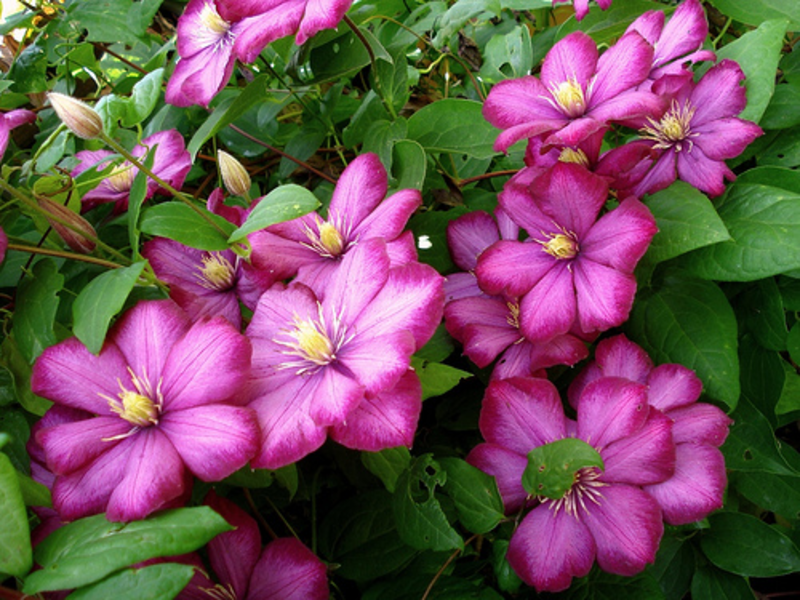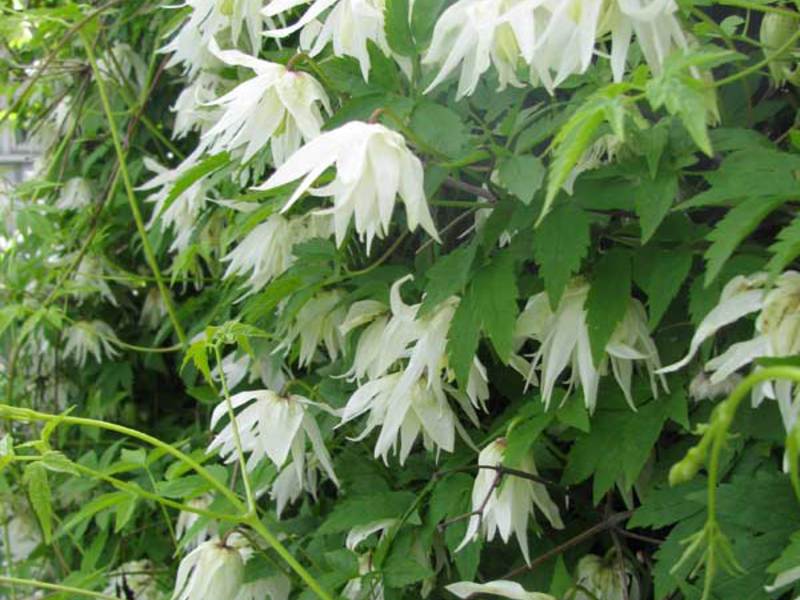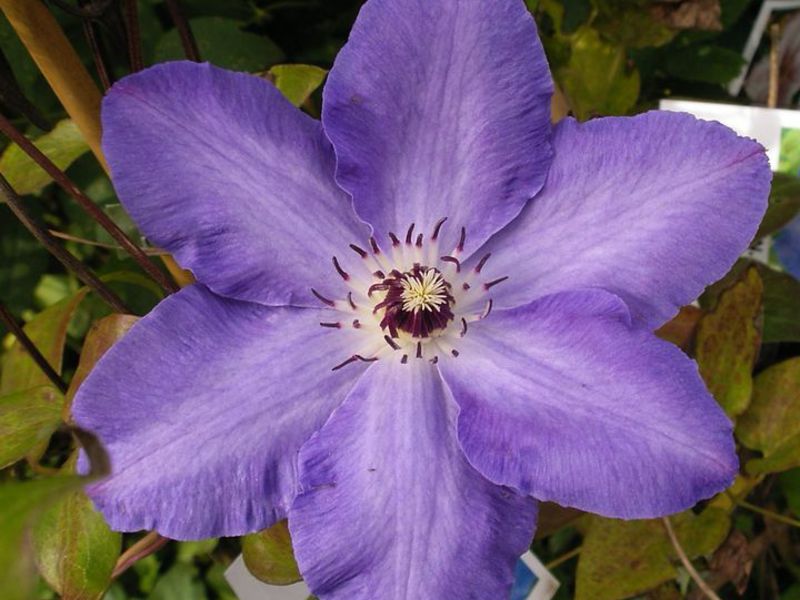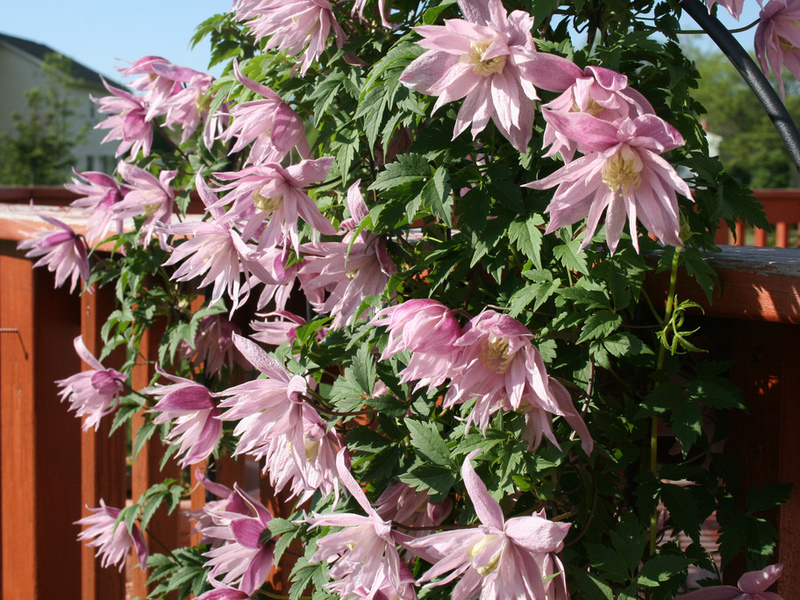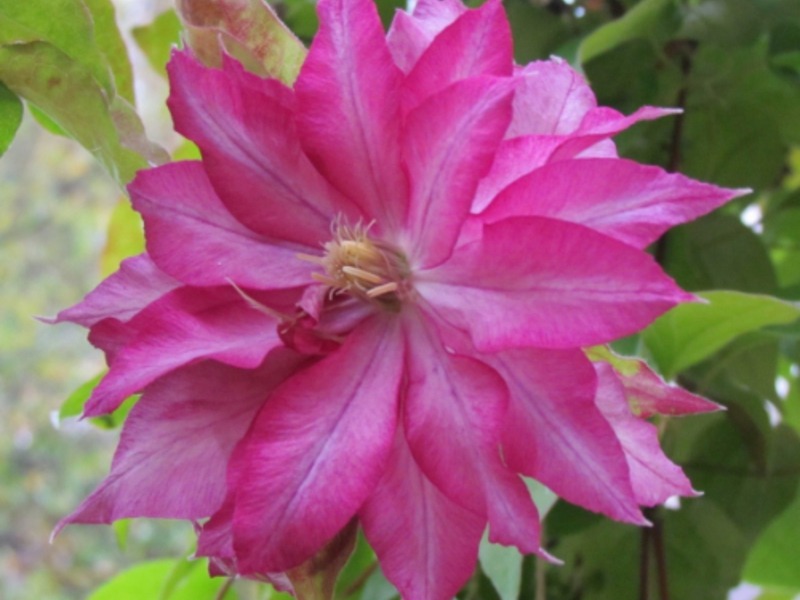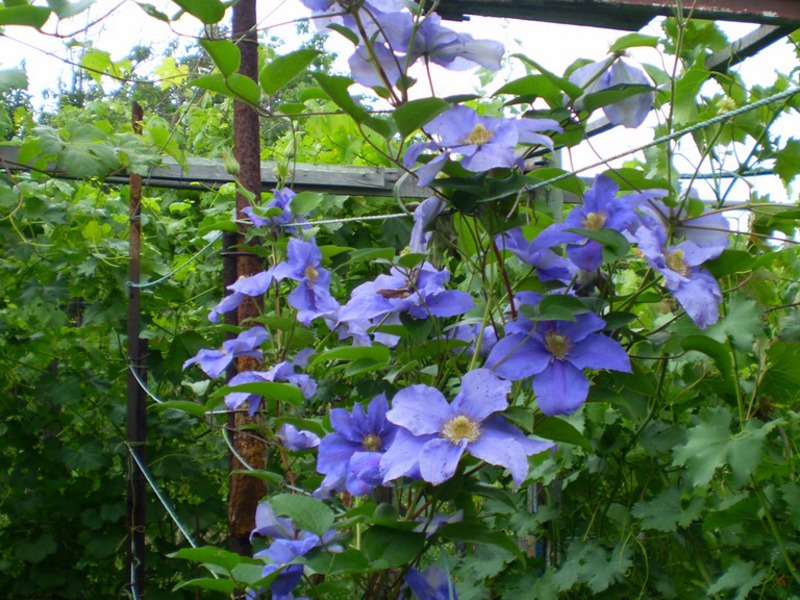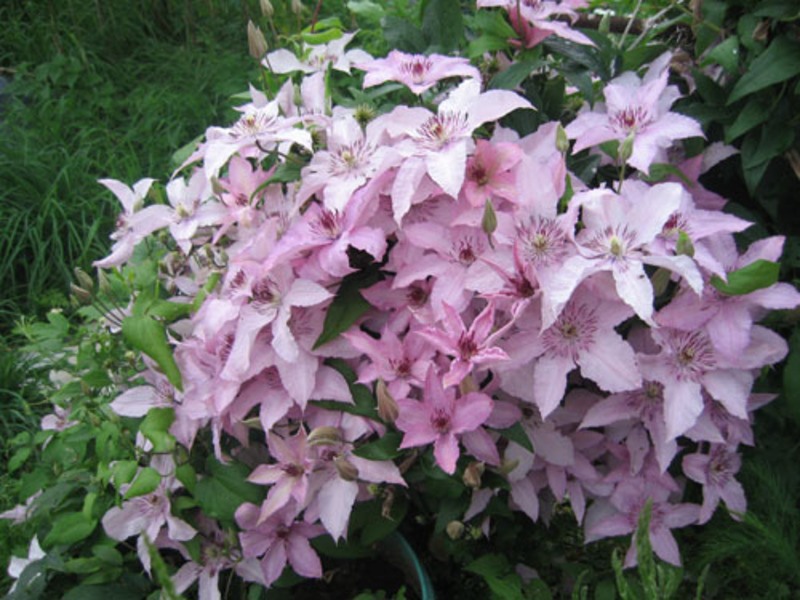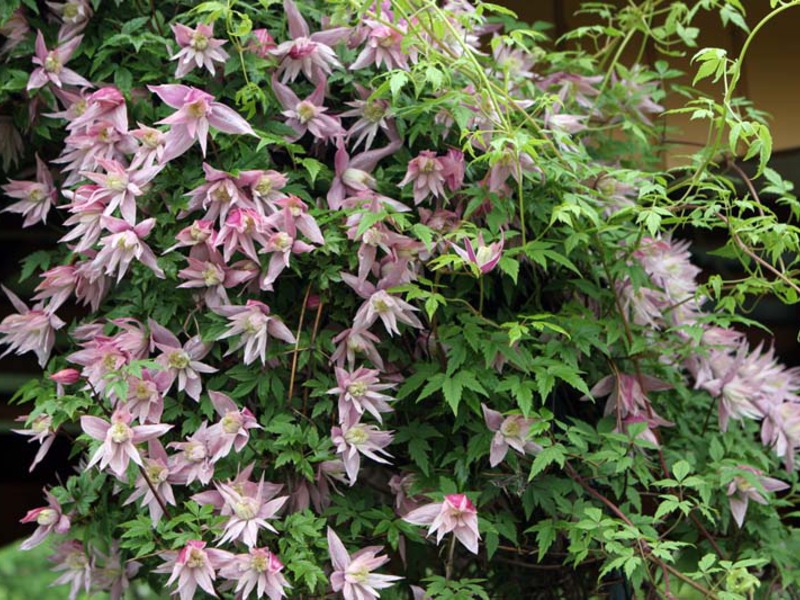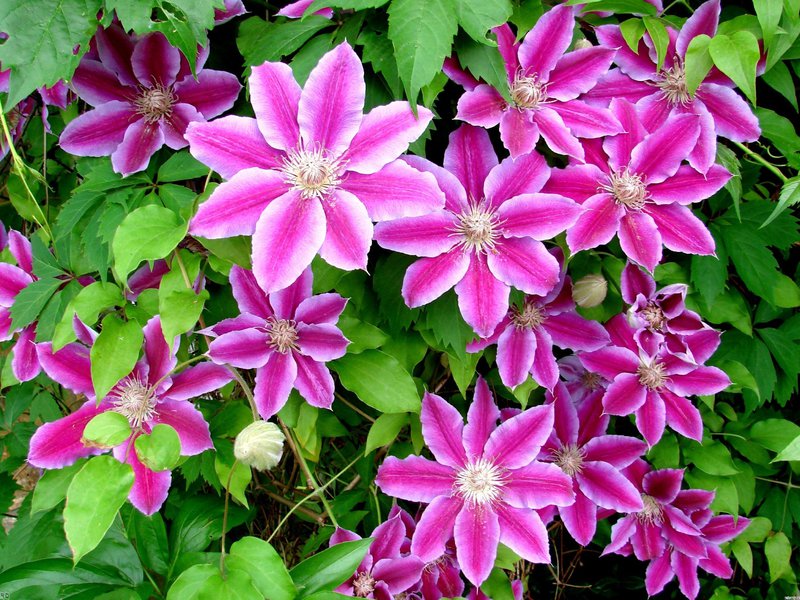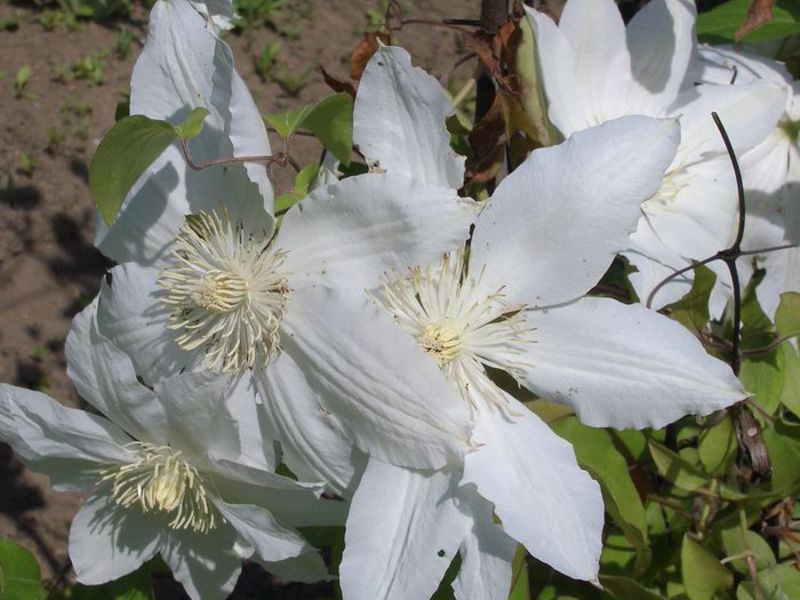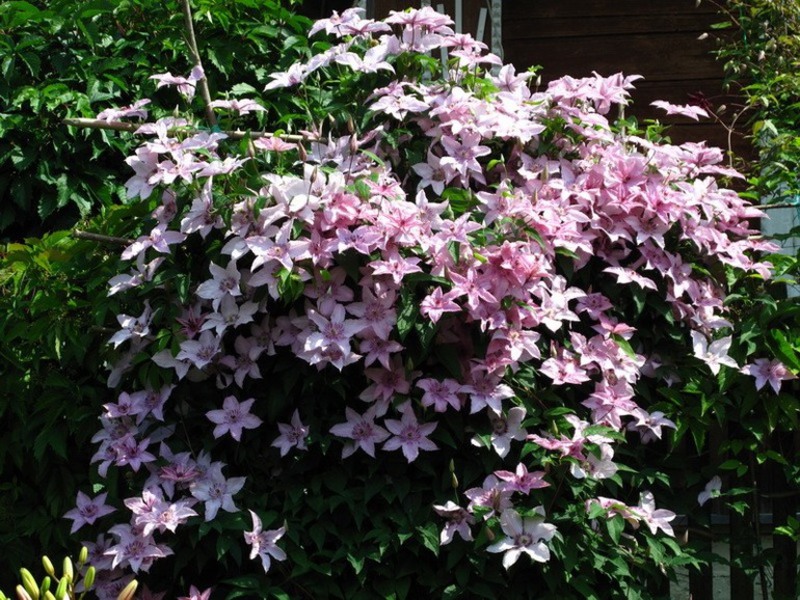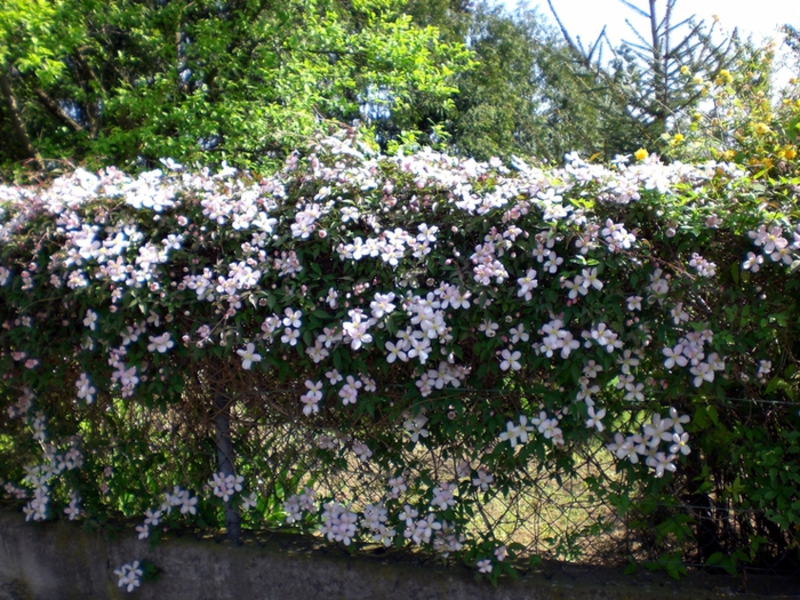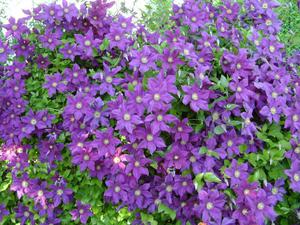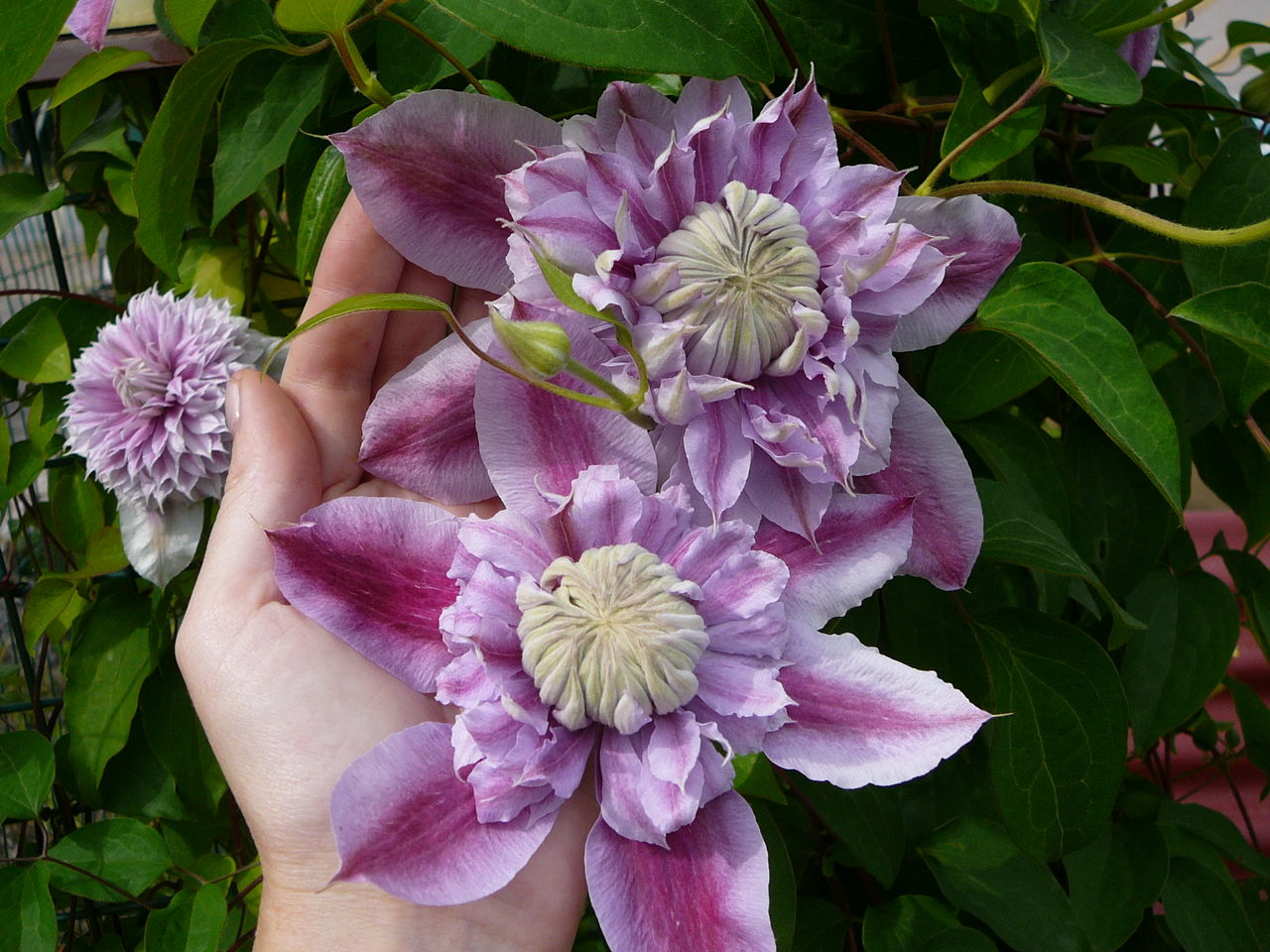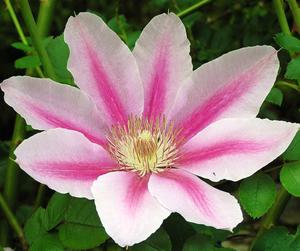 The most popular among modern flower growers is the amazing clematis, and in the huge list of climbing plants, it is rightfully considered the favorite and king of vines! The indisputability of this hit is confirmed by the abundant flowering and many colors of the flower.
The most popular among modern flower growers is the amazing clematis, and in the huge list of climbing plants, it is rightfully considered the favorite and king of vines! The indisputability of this hit is confirmed by the abundant flowering and many colors of the flower.
The breeding of large-flowered varieties of plants began to be dealt with in the 18th century and are still trying. Breeders managed to create original hybridsthat satisfy the tastes of even the most sophisticated flower growers. Among them, flowers of different heights and flowering periods, double and simple, small and large, are easily found. The varieties of this flower are characterized by excellent decorativeness, which is combined with ease of cultivation and maintenance. This is what gave impetus to the widespread distribution of the most beautiful flower among landscape designers!
Content
Characteristics of clematis
The flower "clematis", the photo of which fully reflects its beauty, belongs to the buttercup family, and at the moment it is known about the existence of more than three hundred names of this plant species. They grow on any continent, of course, with the exception of Antarctica. Clematis is an inhabitant of forests, steppes, river banks and even gorges!
The root system can be fibrous or pivotal, and here it is worth knowing that the core system does not tolerate transplantation well. That is why it is necessary to immediately determine the flower's permanent place in the garden. The foliage of clematis varieties is simple, steamy, or complex, consisting of three, five or seven leaves.
As for the fruits, they are presented in the form of numerous achenes with short or long pubescent columns and a fleecy beak. You can verify this with a photo on the Internet.
The flowers are usually bisexual, collected in inflorescences or single. Their shape is varied - a panicle, a shield, a half-umbrella. Sepals act as petals (four - eight pieces, and in double varieties - up to seventy).
Planting and leaving
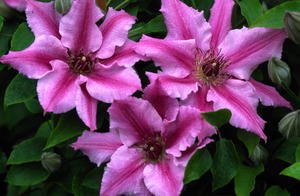 For clematis to develop successfully, it is worth considering certain characteristics of the plant:
For clematis to develop successfully, it is worth considering certain characteristics of the plant:
- love light and places protected from the wind;
- prefer slightly alkaline permeable soil, loose, fertile and perfectly fertilized;
- does not tolerate wet, acidic, saline and heavy soil;
- fresh manure and sour peat damage the plant.
Before you start planting a flower, you need to prepare two-meter supports, which are designed to support the vines in case of strong winds. I would like to note that it is not recommended to plant clematis close to the wall or fence so that the water flowing from the roof does not fall on them.
When the roots are dry before planting, they should soak for a couple of hours in water... A little bit of earth is placed in the bottom with a tubercle, and the root system is distributed from above, then it is covered with earth and a small depression is made so that the water does not spread out during watering.
Plant care involves:
- Regular deep watering in the heat at least once a week and loosening the earth.
- Permanent weed removal.
- Top dressing once a month (we will dwell on this issue in more detail).
- In the fall, before the onset of cold weather, the stems of the plant should be cut off.
Correct feeding
Flowering plants in early spring must be fertilized with nitrogen, and about 50% of it can be obtained from organic matter. Top dressing is also allowed with mineral types of fertilizers with a high percentage of nitrogen. Fertilizer can be prepared as follows: a liter of liquid mullein and a tablespoon of urea are thrown onto a bucket of water. Thanks to nitrogen, the flower blooms more violently and develops faster in spring.
Before the formation of buds, potash fertilizer is required, which is present in ash and mineral complexes, which are sold ready-made. If you want to prepare fertilizer yourself, you can take a tablespoon of Agricola-7 and the same amount of potassium sulfate and dissolve them in ten liters of water.
By the end of August, the flower is watered with phosphorus fertilizers: two tablespoons of Agricola for flowering plants are diluted with a tablespoon of superphosphate in a bucket of water. So, you can guarantee the future laying of buds on the vine.
Pests and diseases
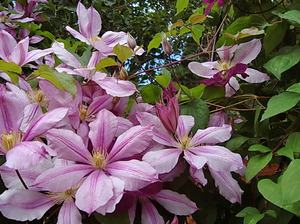 Wilt wilting is considered the most common flower disease. It can be recognized by drooping apical leaves. If nothing is done, mass death of the shoots and the entire bush will begin. First you should cut off diseased branches, and then water the bush with a solution of potassium permanganate.
Wilt wilting is considered the most common flower disease. It can be recognized by drooping apical leaves. If nothing is done, mass death of the shoots and the entire bush will begin. First you should cut off diseased branches, and then water the bush with a solution of potassium permanganate.
Pests can cause big enough problems for clematis. Nematoda eats roots and the plant is not able to receive water, and therefore it begins to wither. The place of growth must be disinfected with nematicides.
If at the end of the season dark gray necrosis forms on the foliage, a solution of copper sulfate (1%) will help.
How are clematis classified?
These flowers are quite diverse in their types, shapes and varieties, but today they often began to be classified so that it is easier to differentiate plants by parameters... So, it is easier to choose the appropriate agricultural technology.
- Clematis Zhakmana is a large shrub vine with shoots up to four meters in length and a well-developed root system. Zhakman's bloom is large, as evidenced by numerous photos. Jacqueman's flowers are blue-violet and are odorless. Abundant flowering of Zhakman is noted on the shoots of this year. In winter, they are cut to the ground.
- Clematis Vititsella is a shrub vine variety with shoots up to 3.5 meters in height. The flower is open and mostly painted in pink-red tones. Lush and abundant flowering occurs on young shoots.
- Clematis Lanuginoza is a shrub vine variety with thin shoots up to 2.5 meters. The flower is large and opens wide. Coloring can be white or blue. This type of plant is characterized by flowering on last year's shoots. If pruning is carried out in the fall, then the next year flowering will occur in the second half of summer.
The best varieties of clematis for the Moscow region
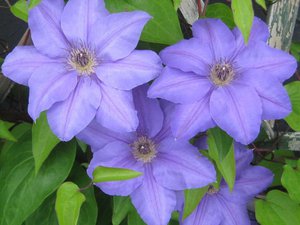 If you follow the rules of agricultural technology, clematis varieties suitable for the Moscow region will normally tolerate summer temperature drops and frosts in winter. It is important to be able to choose the right one among three hundred types of varieties, those that are more suitable according to the description for cold and short summers.
If you follow the rules of agricultural technology, clematis varieties suitable for the Moscow region will normally tolerate summer temperature drops and frosts in winter. It is important to be able to choose the right one among three hundred types of varieties, those that are more suitable according to the description for cold and short summers.
Clematis for the Moscow region are presented in a separate group, a description of the varieties of which and a photo can be easily found on the Internet. We offer our short selection of the most popular clematis, tested by flower growers in practice:
- Nelly Moser - Clematis with delicate light pink large oblong flowers. On each of the petals there is a strip of purple in the center, and the color intensifies towards the middle. It is impossible to describe beauty in words - it is better to see it in the photo. Flowering begins in early spring on shoots that have survived the winter and continues throughout the summer. The bush is resistant to disease, and requires good shelter for the winter.
- Gypsy Queen - a variety of clematis with shoots up to five meters in height.The spreading plant does not tolerate direct sunlight, like most other varieties. Purple-red velvety flowers densely cover the crown from early spring until frost. An unpretentious plant normally tolerates temperature extremes and is resistant to fungal infections.
- Niobe - a variety with large purple-red flowers, which turn almost black at first. They reach 15 centimeters in diameter and appear on young shoots in May - July, and after pruning they bloom again in September - October. The world famous flower implies the need for fertilizing, mulching and loosening the soil. The bush is not tall, but the crown is lush and spreading.
- General Sikorski - clematis with delicate pastel blue-lilac flowers, the shade of which changes in natural light. Large flowers are located on young shoots. This variety is disease resistant and likes to grow in semi-shaded areas.
- Elegy - a variety characterized by early and long flowering (July - October). If you follow the correct fertilization scheme and have a good drainage system, flowering will be abundant. The diameter of the dark lilac flower reaches 14 cm. The central vine grows up to three and a half meters.
 Luther Burbank - tall clematis with numerous shoots covered with large purple flowers, reaching a diameter of 25 cm. The flower cups are open, and the oval petals are wavy along the edge. Flowering lasts all summer until the first frost. This variety, like clematis Zhakman, does not like transplants. The most preferred soil type is considered to be slightly alkaline.
Luther Burbank - tall clematis with numerous shoots covered with large purple flowers, reaching a diameter of 25 cm. The flower cups are open, and the oval petals are wavy along the edge. Flowering lasts all summer until the first frost. This variety, like clematis Zhakman, does not like transplants. The most preferred soil type is considered to be slightly alkaline.- Rouge Cardinal - a gorgeous variety with purple-red flowers up to 20 cm in diameter. The rounded petals of the flower are slightly elongated, and there are delicate stamens in the center. The plant is compact, and therefore the shoots form a lush and low bush. In the case of proper care and normal wintering, flowering continues all summer with an abundant cover of the bush with flowers.
- Anastasia Anisimova - clematis with a central liana length up to 2.5 meters. Blooming with large light blue flowers, which are slightly twisted, lasts all summer. If clematis is properly fed and watered enough, you can create a gentle perception of the picture against a green background of foliage. This flower is hardy and unpretentious and requires autumn pruning. Often this clematis is bought for landscaping loggias and balconies.
